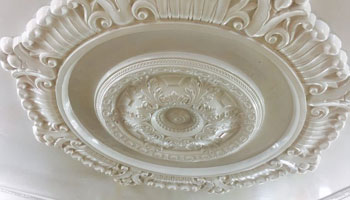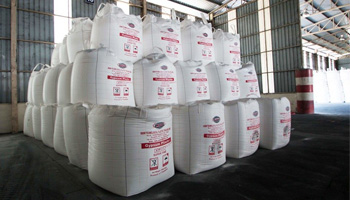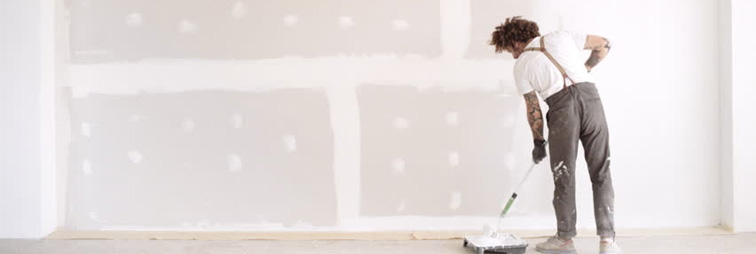What are the uses of gypsum?

Gypsum is a mineral made up of the component Calcium sulphate and water. The chemical compound name is calcium sulphate dihydrate. The texture of gypsum is chalk-like and it is lightweight. In its original state found in nature, it is crystalline. After it is processed for use it attains a chalk-like nature. When mixed with water, it retains its original crystalline state.
Gypsum has many uses in all kinds of industries. It is majorly used for plastering purposes, for moulding of sculptures and as fertiliser.
Previously, gypsum was not used as often in the construction industry. However, with the growth of technology and new trends, this material is being used extensively in this industry due to its useful properties.
Plaster of Paris is made by heating gypsum to high temperatures ranging from 120 to 180 degrees celsius. When water is added, the Plaster of Paris turns back into its previous form, i.e. gypsum. This causes the material to harden up. This hardened material is used to make casts and mouldings in construction.
Dried PoP is applied as a coating on the surface of bricks, blocks and concrete surfaces. Gypsum plaster can be applied on almost any surface and applied directly on walls.
Advantages of Gypsum Plaster:

High Strength
Gypsum plaster has high durability and is light in weight. This automatically reduces the dead load on the entire structure.
Polished finish
Gypsum plaster can be used on walls without the hassle of spoiling the surface. The texture of this material allows it to be flawlessly lined even at the corners of the wall.
Resistant to heat
Gypsum plaster has high resistance to extreme temperature conditions and is also fire-resistant.
No cracks on shrinking
Conventional cement, when mixed with water, produces some amount of heat. This heat is visible in the form of cracks on the surface whereas, gypsum produces a negligible amount of heat when mixed with water. Hence, there are no surface cracks.
Available in markets
Certain materials such as natural sand are not available in some of the markets. Gypsum, however, is available in all markets and can be bought in its ready-to-use form.
Easy to Use
Gypsum plaster can be directly applied onto concrete surfaces, bricks, blocks and for other construction activities.
Quick Setting Time
Compared to conventional materials, gypsum plaster requires around half an hour or less to set on the walls. Since the plaster has to be dried up completely, the walls can be painted 72 hours after the plaster has been set.
Less Water Consumption
Gypsum plaster does not require water for curing unlike conventional plaster used for cementing and hence, the process is finished quickly without the usage of water.
Can be used in interior design
Gypsum plaster can be moulded into different shapes and sizes therefore, it is useful in interior design and similar applications.
Easy maintenance
Cement plaster requires careful observance to ensure that the materials are mixed in proportion however, the same is not the case with gypsum plaster which does not require as many quality checks to assure its standard.
Disadvantages of Gypsum Plaster:

Expensive
Gypsum Plaster is costlier than conventional cement mortar plaster that constitutes of sand and cement. In areas where sand is not permitted for usage, gypsum plaster has to substitute for the lack of sand and this would increase the overall cost for construction.
Retains moisture
Gypsum plaster is not resistant to moisture and hence, cannot be used for outdoor applications. This material cannot be used in areas that are exposed to water and dampness such as the bathroom, kitchen counter, etc.
How should Gypsum plaster be stored on a construction site?

Gypsum plaster is not resistant to dampness and hence, should be stored away from any surface in contact with water. The average shelf life of this material is about three to four months from the date of its manufacturing. When properly stored, it can be used for up to six months.
To make the most out of this material, it should be stored on a dry surface, preferably an elevated surface that has no contact with water and moisture from the weather.
Please check out:
How to mix concrete by hand at Construction site


















Kassahun
posted on Dec 29, 2020 12:11:19 PM